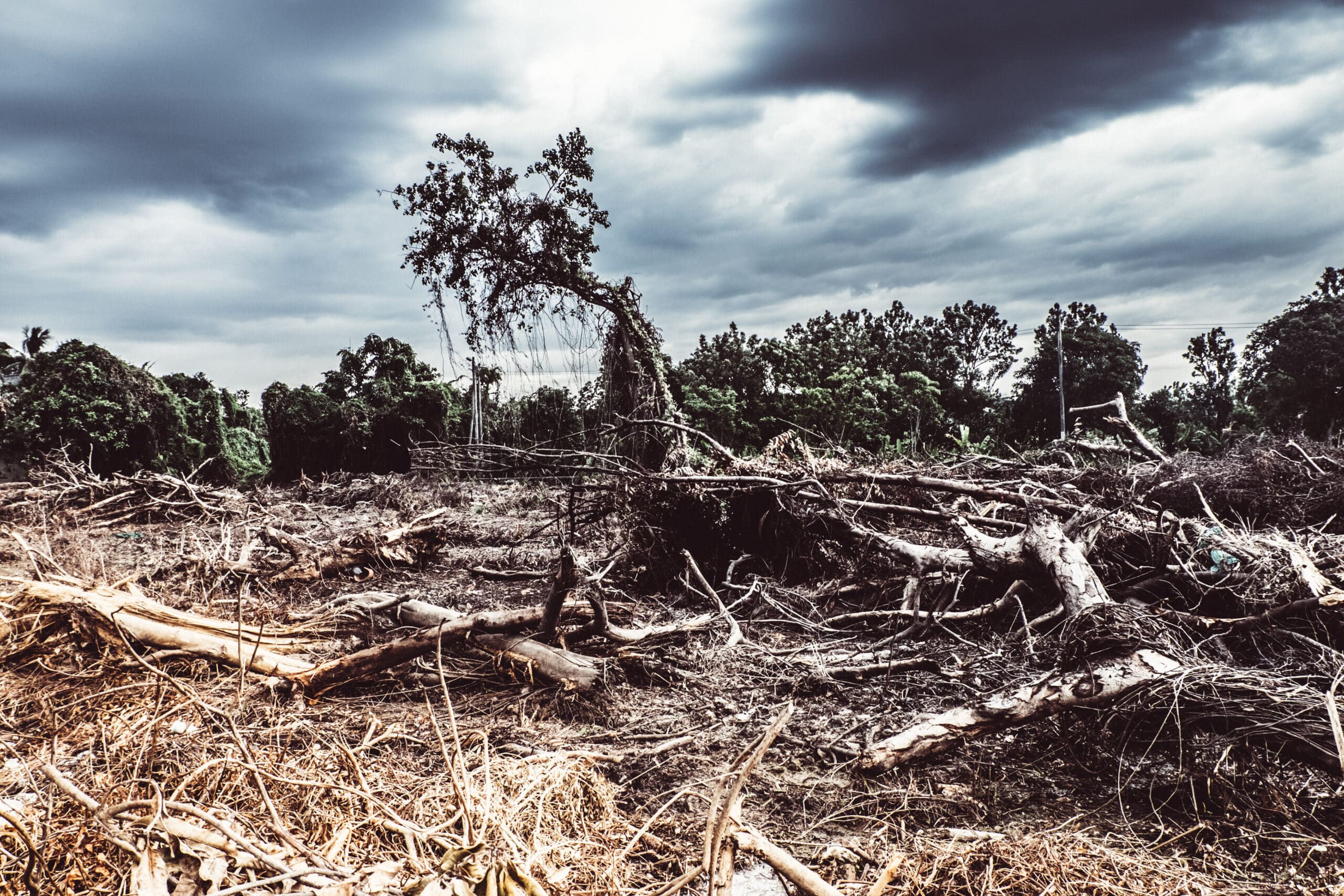Over 250,000 hectares of forest is lost per year in Zambia, which is one of the highest rates of deforestation in the world. The drivers of deforestation include unsustainable agricultural expansion, charcoal production as a source of household fuel, forest fires,
and a growing population.
The majority of the country’s population live in rural areas characterised by high levels of poverty and there is a high dependence on renewable natural resources, such as forests, wetlands, fisheries, and water as a source of livelihood, income, and employment. The increasing dependence on these resources, coupled with unsustainable human practices, has had a significant and damaging impact.
The call for suitable management of natural resources must be considered alongside the livelihood options for the people who depend on these resources. Even though there is increasing awareness that deforestation and forest degradation, together with agriculture and other types of land use, are among the major contributors to global greenhouse gas (GHG) emissions, many forest-dependent communities simply do not have viable livelihood alternatives to turn to. It is therefore important to fully understand the drivers and incentives that underlie deforestation.
Ideal vs reality: Pushing the agenda
As an Environmental Specialist working with the World Bank, I have supported projects aimed at promoting sustainable agricultural management and forest conservation. Results from these interventions have shown that climate mitigation and socioeconomic development can be simultaneously achieved through the active participation of the private sector and local communities.
In this role, I have had the opportunity to draw a line between the ideal situation and reality. As we push the agenda for sustainable forest management, it is important to also understand the hard choices communities in rural areas must make. Cutting down a tree for charcoal production is an important source of income for many living in rural areas. Leaving the tree for environmental reasons will result in a loss of income and have a significant impact on livelihoods.
This is a harsh reality that most policy makers and environmentalists must navigate to get the best results for both. Through working with the World Bank in Zambia, I have had the opportunity to support an initiative that seeks to address this gap through a carbon finance initiative.
Integrating communities to encourage better resource management
In 2015, a pilot project was commissioned by the World Bank in partnership with the private sector organisation Community Markets for Conservation (COMACO), which aimed to link sustainable agriculture and forest conservation with results-based payments in response to the challenges of deforestation and unsustainable use of natural resources. The pilot was a Carbon Offset trust-funded project, to which the private entity signed an Emission Reduction Purchase Agreement (ERPA) with the World Bank, with the aim of reducing GHG emissions through the sustainable management of land traditionally devoted to community activities, through both agricultural and non-agricultural interventions. The project was to deliver a target of 265,578 tCO2e Emission Reduction (ER), measured in tons of carbon dioxide equivalent gases (CO2-e), and the expected carbon credits (measurable emission reductions from climate action projects) were valued at USD 1 million.
The project was undertaken in the Eastern Province of Zambia, which has a poverty incidence rate of 70%. The project sought to increase agricultural production, link farmers to markets, and reduce GHG emissions through the adoption of sustainable, climate-smart agricultural practices, and conservation of forests in community areas, also known as Reduced Deforestation and Forest Degradation (REDD+) and Sustainable Agricultural Land Management (SALM). My role in the project was to provide technical support to the implementing entity and to ensure that community activities contributing to ERs would result in good land use practices.
A total of 19,399 smallholder farmers within nine chiefdoms in the Eastern Province were included in the pilot and adopted sustainable land-use practices such as agroforestry, residue management (for example, cessation of residue burning), alley-cropping, and reduced tillage. This has resulted in improved productivity on selected crops, particularly during normal agriculture seasons, while maintaining average productivity in seasons characterised by unforeseen shocks such as droughts.
Following successful implementation of the project, in 2018 participants were awarded with carbon payments for their sustainable agriculture and forest management. The communities received approximately USD 70,794 in carbon payments for ERs achieved through practicing SALM and REDD+. Approximately 111,245 hectares of forest have been protected from deforestation and degradation through this intervention, and 128,375ha brought under sustainable agriculture and forest management. This resulted in a total of 264,578 tCO2e (verified by a third party) GHG emission reductions for the project. This emission reduction corresponds to taking 57,160 passenger vehicles off the road for one year.
‘The icing on the cake’
Following the project, the communities we worked with have come to appreciate the value of sustainable forest management as it directly links to their livelihood. With continued adherence to the practices, crop productivity has increased, and farmers are able to produce enough food for
household consumption and sale, thereby reducing their over-dependence on natural resources.
In addition to these interventions, another key aspect of the project was the introduction of a model that links farmers to markets through the private sector. In turn for promoting sustainable agriculture and forest management among communities, COMACO buys the sustainably-produced food
products from the farmers at a premium price and sells these under ‘It’s Wild!’ brand to retail chains, institutions, and other customers in Zambia. With a market that is ready to buy, this model assists farmers in increasing their compliance with market standards and financially benefit from sustainable agricultural practices. Even before the mention of carbon payments, one of the participating farmers shared during the carbon payment ceremony that ‘the carbon payments were just the icing on the cake’, as they had already benefitted from the sale of the products at a premium price. Farmers have been able to increase their income in a sustainable way due to the increased productivity and yields. Such initiatives have also meant that communities are now invested in preserving trees for environmental purposes rather than cutting them down, while enjoying the benefits of sustainable natural resource management.
Building on lessons from the field
As this project shows, carbon finance can be the bridge that integrates sustainable natural resource management and promotes sustainable rural livelihood options. However, dependence on funding from the donor community on projects may not be possible. To ensure the long-term
financial sustainability of these practices, it is recommended that they are mainstreamed within country programmes.
A strategy is therefore needed to improve compliance for sustainable natural resource management. Firstly, the proper valuation of accounting for natural resources is crucial for robust development planning, in addition to subscribing to programmes that promote sustainable management of
these resources alongside community and public awareness of the benefits. Secondly, natural resource users across diverse livelihoods need to collaborate to integrate long-term sustainability, while promoting solutions that can support rural livelihoods and deliver positive environmental outcomes simultaneously.
Disclaimer: The views expressed in this article do not reflect those of my employer, The World Bank.




